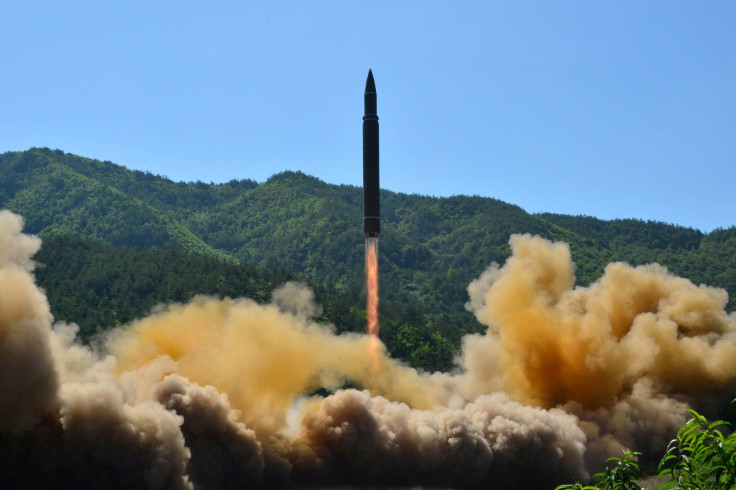Hawaii Ballistic Missile False Alarm Highlights Flaws In Trump’s North Korea Policy Says Congresswoman

An emergency alert warning of an incoming ballistic missile was mistakenly sent out to people in Hawaii Saturday prompting a Congresswoman to claim Sunday that the incident highlights the failures of President Donald Trump’s North Korea policy.
Appearing on CNN's "State of the Union," Democrat Rep. Tulsi Gabbard of Hawaii said the terrifying situation Saturday underlined issues in Trump’s overall handling of North Korea.
“What makes me angry is that, yes, this false alarm went out and we have to fix that in Hawaii but really we’ve got to get to the underlying issue here, of why are the people of Hawaii and the U.S. facing a nuclear threat coming from North Korea?” said Gabbard.
“And what is this president doing, urgently, to eliminate that threat?”
Hawaii Rep. Tulsi Gabbard: The "unacceptable" false alarm missile warning in Hawaii underscores the need for talks with North Korea https://t.co/iysxkLg2qd pic.twitter.com/EsxRoVivU9
— CNN Politics (@CNNPolitics) January 14, 2018
Gabbard said that she wants Trump to speak directly to North Korean leader Kim Jong Un and to begin negotiating without any preconditions. Secretary of State Rex Tillerson had made similar calls for negotiations, but Trump has wavered on whether to enter into talks. Denuclearization is the pretext North Korea must enter into talks with, some politicians argue, but Gabbard said that if North Korea agreed to get rid of its nuclear capabilities then talks wouldn't be necessary. Gabbard is a military veteran and sits on the House armed services and foreign affairs committees.
“This was unacceptable that it happened but it really highlights the stark reality that the people of Hawaii are facing,” said Gabbard about the incident she called “traumatic.”
The false alarm that went out included sirens, cell phone alerts and radio and television warnings. It was 38 minutes before the government sent out alerts telling people that the message was sent in error. Hawaii Gov. David Ige told CNN that the false alarm was caused “during a standard procedure at the change over of a shift, and an employee pushed the wrong button”.
HAWAII - THIS IS A FALSE ALARM. THERE IS NO INCOMING MISSILE TO HAWAII. I HAVE CONFIRMED WITH OFFICIALS THERE IS NO INCOMING MISSILE. pic.twitter.com/DxfTXIDOQs
— Tulsi Gabbard (@TulsiGabbard) January 13, 2018
“Hawaii has just started a few months ago these monthly nuclear attack sirens as a test, telling people, ‘You hear the siren, you’ve got 15 minutes to seek shelter,’” said Gabbard. “So people who got this message yesterday, they’re literally going through this feeling of, ‘I’ve got minutes to find my loved ones, to say my last goodbyes, to figure out where I could possibly find shelter that will protect them from a nuclear attack.’ And not having an answer to those questions.
In 2017, North Korea tested its sixth and largest nuclear weapon and demonstrated the theoretical ability to target anywhere in the U.S. with a ballistic missile. Trump’s rhetoric toward North Korea has been acerbic. He has taken to calling Kim “Little Rocket Man,” and has threatened to destroy the nation several times. North Korea, in turn, has long been bellicose when speaking about the U.S.
Democratic Hawaii Sen. Brian Schatz said that the state would work with U.S. Pacific Command to fix the issue.
Just got off the phone w @PacificCommand and we agreed to collaborate on an after-action process to make sure that this process gets fixed. This is a state responsibility but we will take collective action.
— Brian Schatz (@brianschatz) January 14, 2018
© Copyright IBTimes 2024. All rights reserved.





















